

IV- Refutation of Total's Hypothesis(cont.)
Some regional seismic lines of Gulf Coast show how the volcanic structures, associated with the breakup of the lithosphere, change with the progressive emersion of the spreading centres. When the spreading centres are subaerial, SDRs (i) are predominant. However, with their progressive emersion, it is possible to recognize (ii) Lava-deltas, (iii) Explosive volcanism, (iv) pillow lava with hyaloclastics and (iv) pillow lava (Imbert et al.,2001). Such a succession is schematically depicted on the plate below.
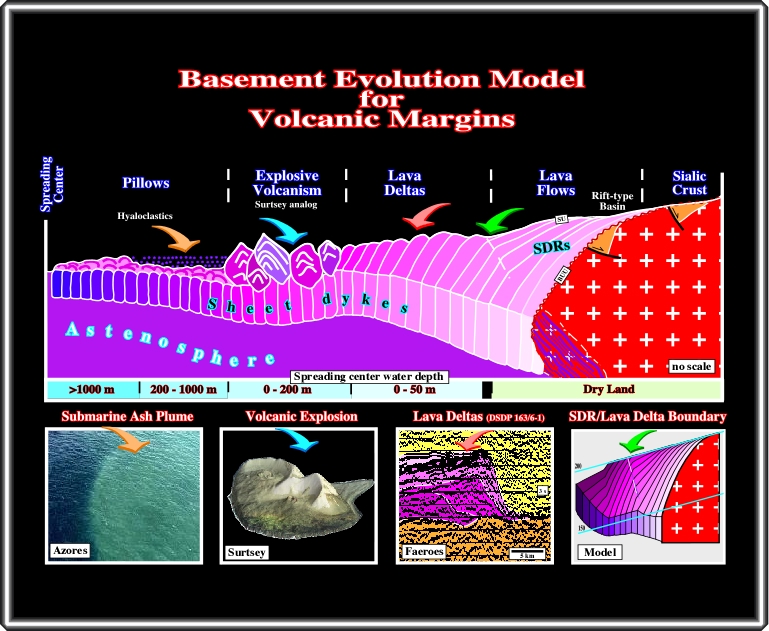
On this theoretical cross-section (margin sediments omitted), from right to left, one can recognize: a) the rift-type basins created by lengthening of the lithosphere, which breakup by intrusion of mantelic material, b) subaerial lava flows deposited above the breakup unconformity (BUU), when the spreading centres were, c) Lava-deltas developed when the water depth of the spreading centres range between 0 and 50 meters, d) V shaped explosive volcanic structures when the water depth ranges between 0 and 200 meters, e) pillow lava overlain by hyaloclastics when the water depth ranges between 200 and 1000 meters, and f) the oceanic crust stritu sensu. Knowing what theoretically can be found on a seismic line ("Theory Precedes Observation", K. Popper, 1934), let's see the data.
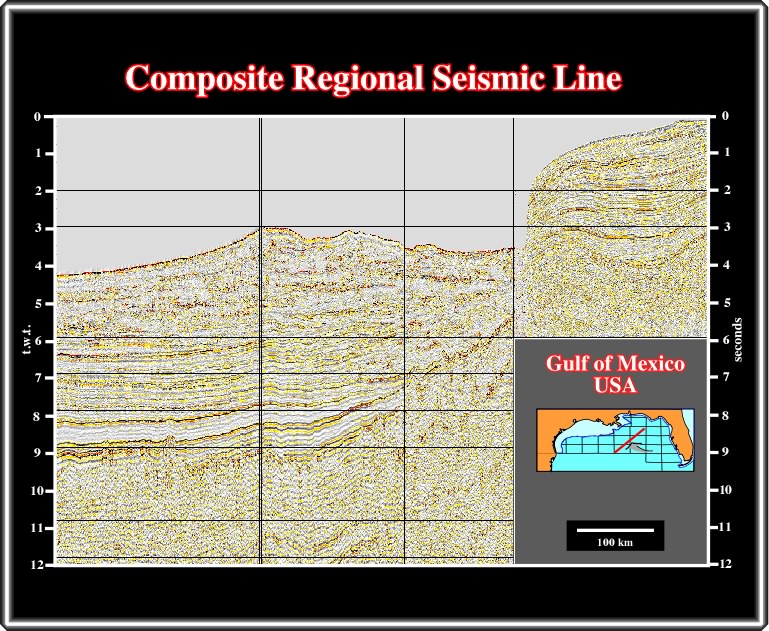
This is the regional line of GOM, in which all volcanic structures associated with the break-up of the lithosphere can be recognized. A roughly geological interpretation of this line is illustrated below.
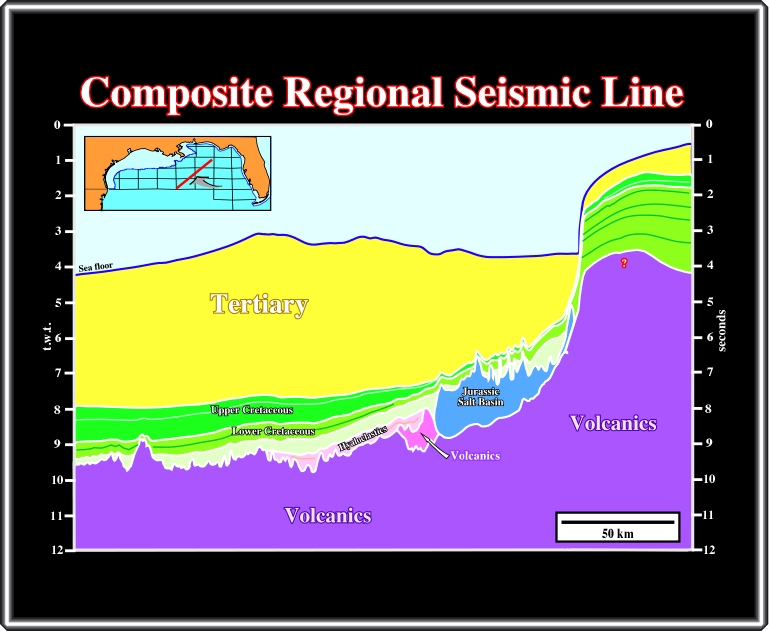
Over a volcanic substratum a Jurassic salt Pannonian was deposited before the breakup of the lithosphere. Then, probably at end of the Jurassic or beginning of Cretaceous, a Mediterranean-type basin was deposited fossilizing the volcanic substratum, in which different types of volcanic structures can be identified. in the following close-ups, from NE to SW, it is easily to recognized one after another the following structures: (i) lava-flows, (ii) delta-lavas, (iii) explosive volcanism and (iv) oceanic crust.
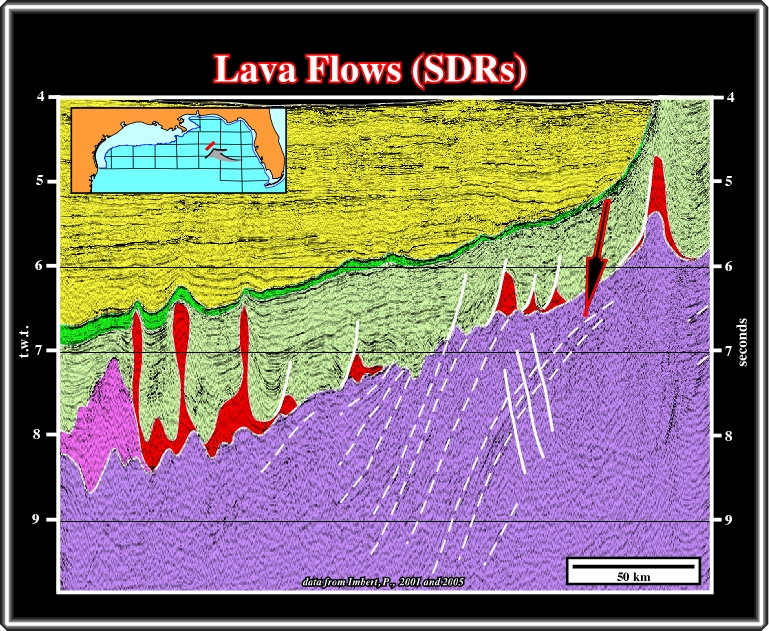
In the easternmost close-up, seaward dipping reflections below the bottom of the salt reflector, or salt weld, are clearly recognized on the right part of the line. They suggest sub-aerial spreading centres.

Going seaward, as illustrated on this close-up, with a water depth of the spreading centres ranging between 0 and 50 meters, the predominant volcanic structures are delta-lavas.
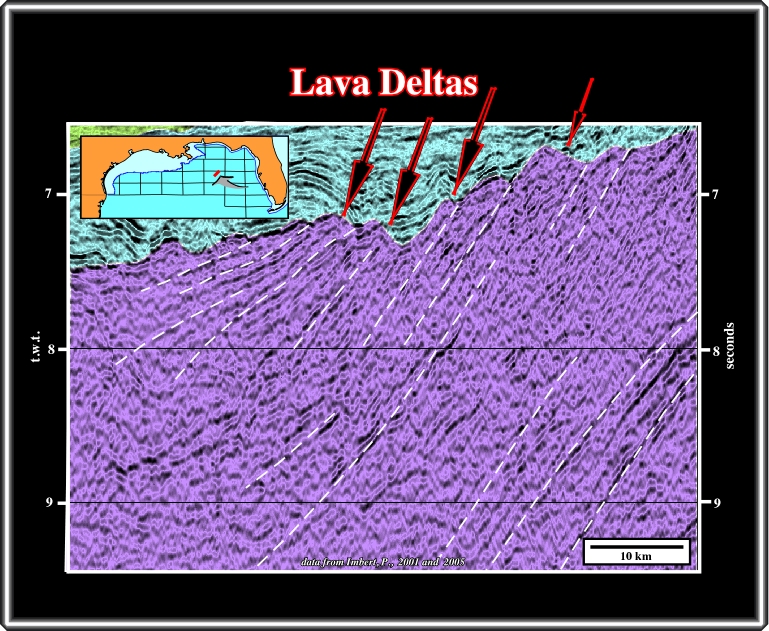
A detail of the previous close-up shows the morphology of the delta-lavas particularly the slope of the frozen basaltic material, which in certain aspects is quite similar to erosional "cuestas". Notice that between successive delta-lavas, sedimentary troughs of the margin sediments should not be taken as rift-type basin. Do not forget that rift-type basins predate the break-up and so they anterior to the lava-flows and delta-lavas.
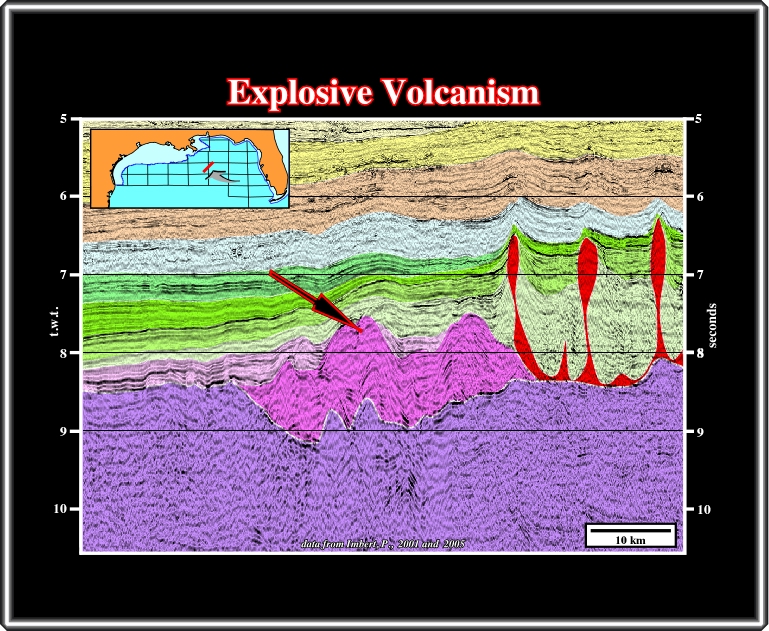
When the spreading center reaches a water depth ranging between 0 and 200 meters, explosive volcanism of Surtsey-type is often predominant. The V shape morphology is typical of these structures as well as their filling by volcanic debris. Hyaloclastic deposits are often onlapping the seaward side of this kind of explosive volcanism.
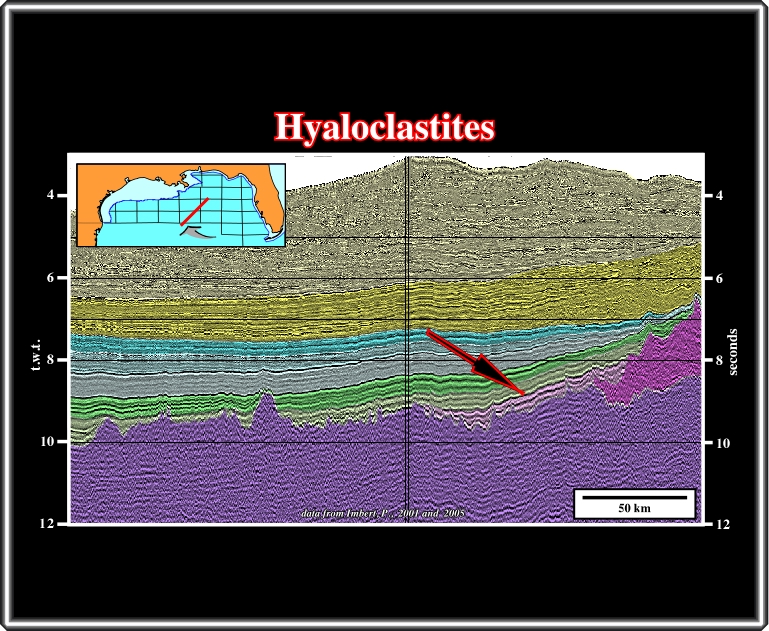
The onlapping of the hyaloclastic interval on the seaward flank of the explosive volcanism is quit well visible, on this close-up, as well as the onlapping on the oceanic crust. On left part of the line, seamounts are easily recognized as on the next close-up.
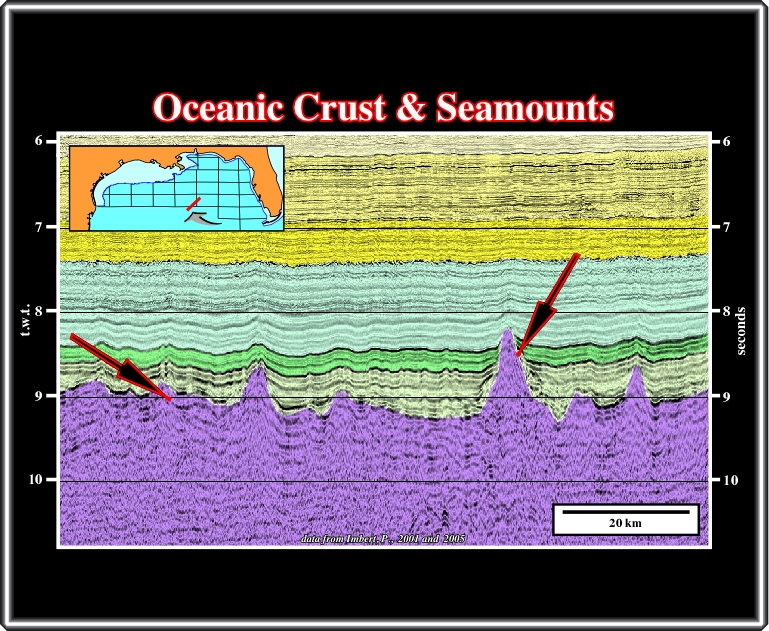
Here, seamounts in the oceanic crust are paramount. Note, that certain geologists working for major oil companies still refuse to admit the oceanic crust in Gulf of Mexico. Indeed, in fact, they have been unsuccessfully tried to farmout the seamounts as “Jurassic reefs”. Frequently, in oil industry, geological monstrosities are hypothesized just for business reasons.
to continue press
next
Send E-mail to carloscramez@gmail.com or to carlos.cramez@bluewin.ch with questions or comments about this conference. Copyright © 2006 CCramez Last modification: August, 2014